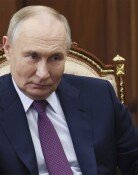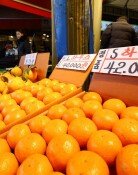Tackling export decline by boosting domestic demands
Tackling export decline by boosting domestic demands
Posted July. 26, 2023 07:55,
Updated July. 26, 2023 07:55
Korea's GDP rose by 0.6% in the second quarter, attributed to a 'recession trade surplus' resulting from a sharper import decline compared to exports. Concurrently, consumption and investment declined, casting a bleak outlook for economic rebound in the latter half. The Asian Development Bank (ADB) recently lowered Korea's economic growth rate forecast to 1.3%. Similarly, the International Monetary Fund (IMF) downgraded its growth prediction to 1.4%, marking the fifth consecutive cut since January 2022.
Korea's actual GDP for the first quarter of 2023 showed a 0.3% increase, marking consecutive growth for two quarters. However, the country is facing a series of setbacks, as consumption decreased by 0.1%, along with declines in construction and equipment investment. Even the exports dropped by 1.8%, reversing the rising trend from the previous quarter. A 4.2% decrease in imports, driven by rising global oil prices, ironically contributed to the GDP increment. Delayed recovery of the semiconductor industry and China's economy continue to add to the challenges. Reviving the national economy now relies heavily on addressing stagnant consumption and investment.
The weakening in consumption and investment doesn't result from a lack of funds in the private sector. According to the Bank of Korea, Korean households have accumulated over 100 trillion Korean won (KRW) in savings surplus since COVID-19, equivalent to 5% of the nation's GDP. This surplus, stemming from increased income, including work wages, contrasts with reduced consumption opportunities. The surplus sum is not used in driving up demands or in repaying the loans, remaining as a dormant catalyst that can destabilize the property market.
The Korean government is hesitant to inject more money into the market to stimulate the economy due to fears of inflation and mounting household debts reaching 1,089 trillion won. Instead, they should encourage the private sector to support investment and consumption, thereby addressing the current low-growth trend. Meanwhile, the IMF's report on growth rate adjustments shows that, unlike Korea, Japan and the Euro Zone may grow by 0.1% to 1.4% and 0.9%, respectively. The U.S. economic growth rate is also predicted to rise by 0.2% to 1.8%, thanks to a strong recovery in the service sector, particularly in the tourism industry, which may lead to a "soft landing" for the nation's economy.
The service sector is more flexible and resilient than manufacturing during economic downturns. Korea's declining imports offer a timely chance to strengthen its service industry. The government should actively support businesses to invest in high-value service sectors like healthcare, tourism, and concerts. The National Assembly must expedite passing the "Basic Act for Service Industry Development," pending for 12 years, and promote deregulation to boost productivity growth.
Headline News
- US approves supply of landmines to Ukraine
- Democratic Party moves to impeach prosecutors over non-indictment of first lady
- Record job losses for workers in 40s highlight economic struggles
- Myung suspected of arranging meetings during South Gyeongsang trip
- Guardians’ Stephen Vogt wins AL Manager of the Year







